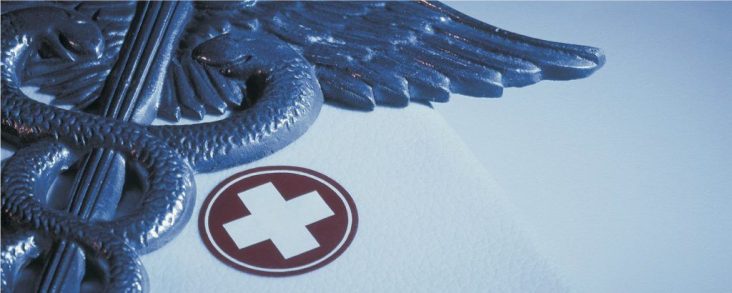Maternal health outcomes worsening in nation, state
by October 3, 2022 5:25 pm 998 views

Maternal health outcomes have worsened in recent years, and they are worse in Arkansas than in other states, members of the House and Senate Public Health, Welfare and Labor Committees were told Monday (Oct. 3).
Jennifer Callaghan-Koru told legislators during a meeting at the University of Arkansas for Medical Sciences Medical Center that maternal deaths decreased nationally in the 20th century, but have doubled in the last 20 years. Thirty women died in pregnancy or within one year of giving brith in 2018, the first full year reviewed by the legislatively-created Arkansas Maternal Mortality Review Committee.
Arkansas’ rate of deaths for pregnancy-related complications is twice the national average, and the committee determined that 92% of the deaths could have been prevented. Among the deaths was Emily Robison, a 22-year-old who died at a Fort Smith hospital a year ago after developing COVID-19 and giving birth two months early.
Callaghan-Koru, an associate professor at the University of Arkansas for Medical Sciences, found that for every death, there are 10 cases of severe maternal morbidity cases resulting in significant short-term or long-term health issues. At the national level, there are 144 cases of severe maternal morbidity cases per 10,000 births. Arkansas has not established a surveillance for its cases, but some estimates have found 195 cases among Medicaid recipients.
If that is true of all cases, then one in 50 women have severe morbidity during pregnancy or postpartum that requires them to be hospitalized, she said. She said that a woman who undergoes multiple C-sections is especially at risk, so avoiding the first can be key to preventing later problems.
“It’s not well-explained why maternal outcomes are getting worse, but if you look at the trend lines, C-section rates have been going up as have the maternal outcomes,” Callaghan-Koru said. “I don’t think there’s a one-to-one correlation, but it’s certainly one of the factors that’s contributing.”
Callaghan-Koru listed three areas where Arkansas is behind the rest of the country. Those include pre-term birth rates; maternal mental health in that almost one in four Arkansas mothers reported postpartum depression or anxiety; and teen birth rates, in which Arkansas has the nation’s second highest rate.
Callaghan-Koru said there are large parts of the state with limited access to obstetrics providers. Thirty-seven hospitals offer labor and delivery services, down from 39. The majority of the state’s counties do not have a facility for delivering a baby, and women living there can have substantial costs to access care elsewhere. The trend nationwide is for maternity and delivery wards to close.
Dr. Nirvana Manning, chair of the UAMS Department of Obstetrics & Gynecology, listed some of the initiatives that have been developed to address the issue. Those include the Healthy Start program that provides services throughout the pregnancy in English, Spanish and Marshallese. Manning said the state needs a network providing information about hospital availabilities and capabilities.
“We know that there’s so many great hospitals in our state. We just need real-time data on where we can get patients safely that can take care of them,” she said.
She said the state should also expand postpartum Medicaid services from the current 60 days to 12 months, as many states have done. Such appointments offer opportunities for education, preventive care, and contraceptive counseling.
Manning said Arkansas is less litigious than northeastern states, where many young doctors won’t complete their residencies without being sued, sometimes several times.
Elsewhere in the meeting, UAMS Chancellor Dr. Cam Patterson told legislators that the hospital is “almost always full” and couldn’t accept roughly 6,000 transfers last year. Furthermore, the hospital has 32 beds offline because it doesn’t have staff for them.
The challenge will be alleviated when The Orthopedic and Spine Hospital opens in May 2023. Also helping will be a “hospital at home” model UAMS is developing with Contessa Health for patients who need a high level of services that can be delivered in their homes.
“Ultimately, the answer to this is we need more beds, and ultimately we’re going to need a new clinical tower if we’re going to continue to serve all the needs that UAMS needs to provide for people of the state of Arkansas,” he said.
Patterson said health care is resistant to recessions because people still get sick, but it is “incredibly vulnerable to inflation” and in some cases “pockets of hyperinflation, especially our labor costs.”
He said hospitals can’t easily pass on the costs of rising expenses because reimbursements from the federal government, Medicaid and insurance companies remain fixed.
Patterson referenced a recent survey by the Arkansas Hospital Association that found that 52% of hospital respondents were operating in the red. On average, responding hospitals saw a margin decrease of 3.5 percentage points between the first quarter of 2019 and the first quarter of 2022.
On the positive side, Patterson said, “COVID-19 per se is not an onerous burden on us anymore.” He said the hospital tends to have single-digit or low-double-digit numbers of patients with COVID-19 complications. The hospital knows how to manage the disease and rarely has to put patients on heart-lung bypass machines any more.
